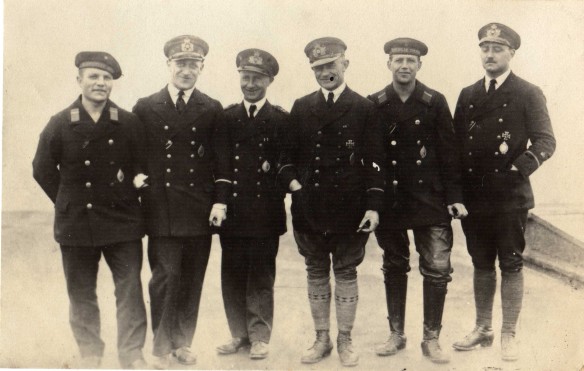
Staffel Christiansen, Seeflugstation Flandern (Zeebrügge)
The Imperial German Navy took an early interest in aviation. The Danzig Imperial Dockyard began seaplane research in early 1911 on orders from Grossadmiral Alfred von Tirpitz and soon issued broad specifications, initially for amphibians. Domestic industry responded poorly, at first forcing purchase of foreign machines, but later supplied indigenous aircraft.
When World War I started, the navy operated only nine seaplanes and a single airship, deployed to protect approaches from the North Sea and the Baltic, but soon expanded its air arm. Grossadmiral Prince Heinrich, the Kaiser’s younger brother and an ardent naval-aviation advocate, took command of forces in the Baltic. There he aggressively used aviation, deploying seaplanes with the fleet for forward reconnaissance, torpedo attack, and aerial minelaying.
North Sea commanders also appreciated aviation’s value. Airships significantly enhanced the fleet’s reconnaissance capabilities. Senior commanders viewed seaplanes as important not only as scouts but also for offensive operations and antisubmarine patrol. The Zeebrugge air station soon became a key base for German offensive and defensive operations in the North Sea.
The navy generally eschewed flying boats, although Dornier developed some very large examples late in the war. Industry supplied rugged patrol seaplanes, large twin-engine torpedo carriers, single-seat fighters, and the excellent Hansa Brandenburg two-seater biplane and monoplane fighters that were serious threats to patrolling British airships and flying boats, submarines, and small craft. By war’s end, the German navy deployed more than 1,100 seaplanes at 32 naval air stations along the coastlines of the Central Powers.
The navy also built up a substantial land-based front-line force in Flanders to defend its bases, expand reconnaissance coverage of the English Channel, and eventually support naval infantry at the front. By late 1918, it deployed more than 100 modern landplanes, roughly divided between single- seat fighters of the Marinefeldgeschwader (Marine Field Squadron) and two-seaters in reconnaissance and ground support units.
During World War I, the Imperial German Naval Air Service grew from nine seaplanes to more than 1,500 aircraft (excluding airships).Aircrew increased from 20 officer pilots to more than 2,100 officers and men supported by a further 14,000 ground personnel (another 6,000 officers and men served with 16 airships). The service significantly enhanced the fleet’s capabilities throughout the conflict. After the air service demobilized (1919–1920), Germany’s navy never again operated its own organic air arm.
References Franks, Norman L.R., Frank W. Bailey, and Russell Guest. Above the Lines: The Aces and Fighter Units of the German Air Service, Naval Air Service, and Flanders Marine Corps, 1914–1918. London: Grub Street, 1993. Imrie, Alex, German Naval Air Service. London: Arms and Armour Press, 1989. Layman, R.D. Naval Aviation in the First World War: Its Impact and Influence. Annapolis, MD: Naval Institute Press, 1996. Morrow, John H. Jr. Building German Air Power, 1909–1914. Knoxville: University of Tennessee Press, 1976.